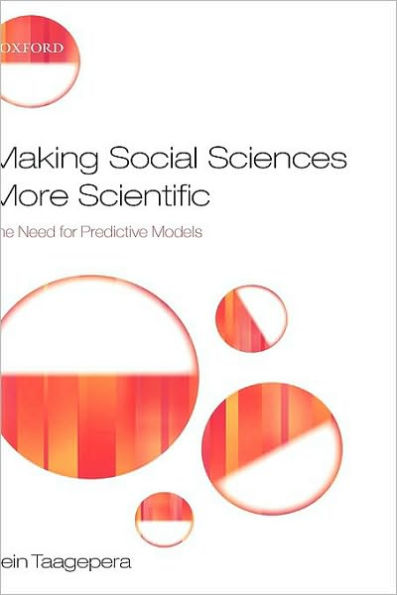In his challenging new book Rein Taagepera argues that society needs more from social sciences than they have delivered. One reason for falling short is that social sciences have depended excessively on regression and other statistical approaches, neglecting logical model building. Science is not only about the empirical 'What is?' but also very much about the conceptual 'How should it be on logical grounds?' Statistical approaches are essentially descriptive, while quantitatively formulated logical models are predictive in an explanatory way. Why Social Sciences Are Not Scientific Enough contrasts the predominance of statistics in today's social sciences and predominance of quantitatively predictive logical models in physics. It shows how to construct predictive models and gives social science examples. Why Social Sciences Are Not Scientific Enough is useful to students who wish to learn the basics of the scientific method and to all those researchers who look for ways to do better social science.
"1101400022"
Making Social Sciences More Scientific: The Need for Predictive Models
In his challenging new book Rein Taagepera argues that society needs more from social sciences than they have delivered. One reason for falling short is that social sciences have depended excessively on regression and other statistical approaches, neglecting logical model building. Science is not only about the empirical 'What is?' but also very much about the conceptual 'How should it be on logical grounds?' Statistical approaches are essentially descriptive, while quantitatively formulated logical models are predictive in an explanatory way. Why Social Sciences Are Not Scientific Enough contrasts the predominance of statistics in today's social sciences and predominance of quantitatively predictive logical models in physics. It shows how to construct predictive models and gives social science examples. Why Social Sciences Are Not Scientific Enough is useful to students who wish to learn the basics of the scientific method and to all those researchers who look for ways to do better social science.
65.49
In Stock
5
1

Making Social Sciences More Scientific: The Need for Predictive Models

Making Social Sciences More Scientific: The Need for Predictive Models
eBook
$65.49
$86.99
Save 25%
Current price is $65.49, Original price is $86.99. You Save 25%.
Related collections and offers
65.49
In Stock

Product Details
| ISBN-13: | 9780191560033 |
|---|---|
| Publisher: | OUP Oxford |
| Publication date: | 07/24/2008 |
| Sold by: | Barnes & Noble |
| Format: | eBook |
| File size: | 2 MB |
About the Author
From the B&N Reads Blog
